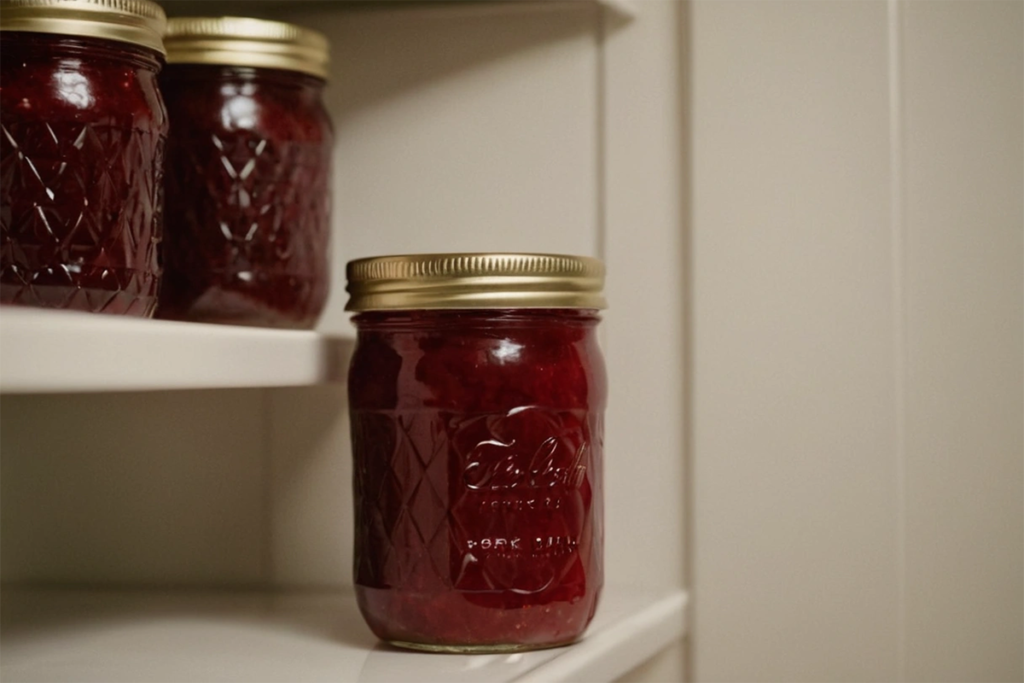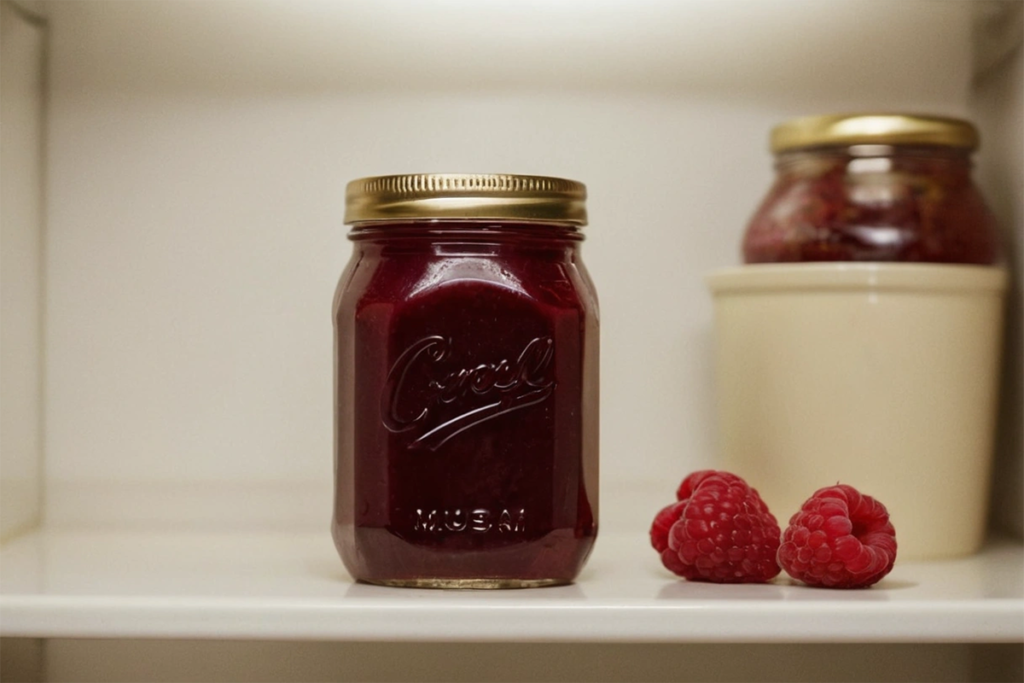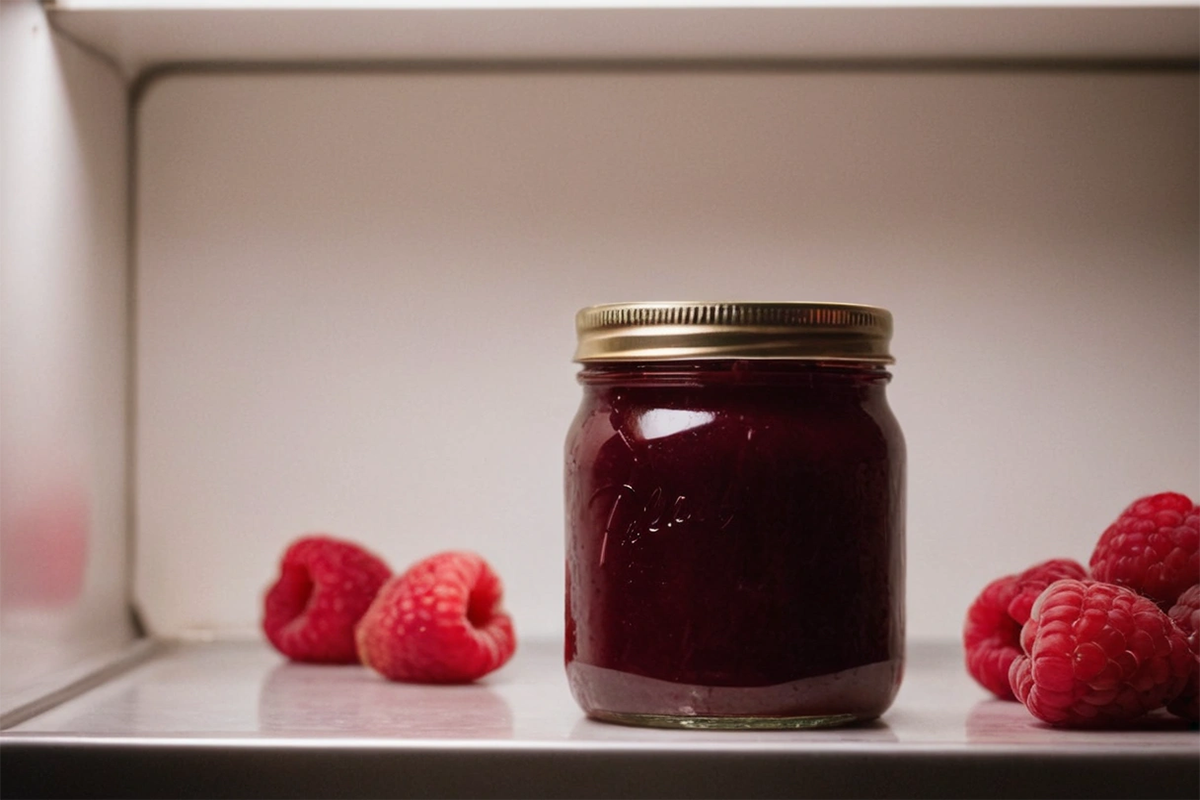How long does homemade raspberry jam last in the fridge? This is a common question for home cooks who love making their own preserves. Homemade raspberry jam is a delicious treat that many enjoy for its fresh, fruity flavor and versatility. Whether spread on toast, used as a filling for baked goods, or stirred into yogurt, its rich taste is hard to beat. For other homemade treats, check out our recipe for Strawberry Crunch Cheesecake.
However, knowing how long homemade raspberry jam lasts in the fridge is essential to maintaining its quality and ensuring food safety. In this article, we’ll dive into the factors that affect the shelf life of homemade raspberry jam, signs that it has spoiled, and best practices for keeping it fresh.
Table of Contents
Factors That Affect the Shelf Life of Homemade Raspberry Jam
Several factors influence how long homemade raspberry jam lasts in the fridge, including the ingredients used, storage conditions, and preparation methods. Understanding these factors is key to ensuring your jam remains fresh and safe to consume.
Ingredients Used
The shelf life of raspberry jam largely depends on the ingredients used. Sugar plays a critical role as a natural preservative, which helps extend the jam’s lifespan by inhibiting bacterial growth. The higher the sugar content, the longer the jam is likely to last. This is because sugar reduces the water content in the jam, making it difficult for bacteria to thrive.
Additionally, many homemade jam recipes use pectin, a natural thickening agent that also helps preserve the jam’s texture and consistency. When used with the right ratio of fruit and sugar, pectin contributes to the long-term stability of the jam, allowing it to maintain its freshness over time.
Sterilization of Jars
Another crucial factor in prolonging the shelf life of homemade raspberry jam is the sterilization of jars. Before storing your jam, ensure that the jars and lids are properly sterilized to prevent contamination. This step eliminates bacteria and other microorganisms that could cause the jam to spoil prematurely.
Sterilizing jars is simple: either boil the jars in water for at least 10 minutes or use a dishwasher with a sterilization setting. Make sure the jars are completely dry before filling them with jam to prevent moisture from encouraging mold growth. For more details on the canning process, check out this guide to canning techniques.
Storage Conditions
Proper storage is key to keeping your homemade raspberry jam fresh. Storing the jam in the fridge significantly prolongs its shelf life. While unopened jars can last a long time at room temperature if canned correctly, once the jar is opened, it must be stored in the refrigerator to prevent spoilage.
When storing in the fridge, keep the jam in airtight containers to reduce exposure to moisture and air, both of which can cause the jam to spoil faster. Ideally, the fridge should be set to a temperature of 40°F (4°C) or below to maintain optimal freshness.
Pectin and Its Role
As mentioned earlier, pectin is a gelling agent that helps set the jam and improve its texture. It plays a secondary role in extending the shelf life of the jam by ensuring it maintains the right consistency over time. Homemade raspberry jam made with additional pectin may last longer than jams without it because pectin helps the jam form a protective barrier against moisture, which can lead to spoilage.

How Long Does Homemade Raspberry Jam Last in the Fridge?
Now that we’ve covered the factors influencing the shelf life of homemade raspberry jam, let’s dive into how long you can expect it to last when stored properly in the fridge.
General Shelf Life
Homemade raspberry jam typically lasts between 1 to 3 months in the fridge once opened. The sugar content, along with proper storage conditions, helps preserve its flavor and prevent bacterial growth. However, the texture and flavor may begin to degrade after this period, even if the jam still appears safe to eat.
Difference Between Opened and Unopened Jars
An unopened jar of homemade jam, when stored correctly in a cool, dark place, can last for up to 6 months or even longer if canned using proper techniques. Once the jar is opened, however, the shelf life is significantly reduced. Opened jars should always be kept refrigerated, where they will remain fresh for 1 to 3 months.
For jams that contain less sugar or no added preservatives, expect a shorter shelf life of around 4 to 6 weeks after opening.
Homemade Jam vs. Store-Bought Jam
While homemade raspberry jam is delicious, it doesn’t contain the same preservatives found in commercially processed jams. Store-bought jams often contain additives that extend their shelf life to several months or even years, even after opening. Homemade jams rely on natural preservation methods like sugar and proper canning, meaning they won’t last as long in the fridge as store-bought varieties.
If you’re interested in learning more about the differences between homemade and store-bought jams, check out this food storage guide for jams.
Freezing Raspberry Jam for Extended Storage
If you want to extend the shelf life of your homemade raspberry jam even further, freezing is an excellent option. When frozen, raspberry jam can last up to one year without losing its flavor or texture. To freeze jam, transfer it to freezer-safe containers, leaving some space at the top for expansion. When ready to use, simply thaw the jam in the fridge overnight.
Signs Your Homemade Raspberry Jam Has Spoiled
No one wants to waste homemade jam, but it’s essential to recognize the signs of spoilage to avoid consuming unsafe food. Here are the most common indicators that your raspberry jam has gone bad.
Visual Indicators of Spoilage
The most obvious sign that your jam has spoiled is the appearance of mold. Mold can appear as white, green, or black spots on the surface of the jam or along the inside of the jar. If you notice any mold, discard the entire jar immediately, as mold can spread throughout the jam, even if it’s not visible.
Smell and Taste
Spoiled jam often emits a fermented or sour smell, which is a clear indicator that bacterial growth has occurred. If your jam smells off, it’s best not to taste it. Likewise, if the flavor seems overly sour or fermented, it’s a sign that the jam has gone bad.
Changes in Texture
Fresh raspberry jam should have a smooth and slightly thick texture. If your jam becomes watery, runny, or develops a slimy texture, it’s no longer safe to eat. These changes in texture suggest that the jam has begun to break down and spoil.
Color Changes
While the jam may naturally darken over time, a significant change in color, such as a dull or brownish hue, is often a sign that the jam is no longer fresh. The vibrant red color of raspberry jam should remain consistent when stored properly.

Best Practices for Prolonging the Life of Raspberry Jam
To get the most out of your homemade raspberry jam, here are some best practices to help extend its shelf life.
Proper Refrigeration
Always store opened jars of homemade raspberry jam in the refrigerator. The cooler temperature slows the growth of bacteria and mold, helping to keep the jam fresh. It’s best to store the jam in the coldest part of your fridge, away from the door, where temperature fluctuations occur.
Using Clean Utensils
Whenever serving jam, be sure to use a clean utensil. Avoid dipping a used spoon or knife into the jar, as this can introduce bacteria and other contaminants that can cause the jam to spoil more quickly.
Airtight Containers
Ensure your jam is stored in airtight containers to prevent exposure to air and moisture, both of which can lead to spoilage. If possible, use jars with tight-fitting lids or snap-seal containers to maintain freshness.
Adding Extra Lemon Juice
Adding a bit of lemon juice to your raspberry jam can help extend its shelf life. The acidity in lemon juice lowers the pH of the jam, making it more resistant to bacterial growth. Be careful not to overdo it, as too much lemon juice can alter the taste of the jam.
FAQs About the Shelf Life of Raspberry Jam
How long does homemade raspberry jam last in the fridge?
Typically, homemade raspberry jam lasts between 1 to 3 months in the fridge when stored properly. After this period, the flavor and texture may begin to degrade, even if the jam hasn’t spoiled.
Can I freeze homemade raspberry jam?
Yes, you can freeze homemade raspberry jam for up to one year. Freezing preserves the jam’s flavor and texture, making it a great option if you want to store jam for extended periods.
How can I tell if my raspberry jam has gone bad?
Spoiled raspberry jam often shows signs of mold, emits a sour smell, or develops a watery or slimy texture. If you notice any of these signs, discard the jam immediately.
Does adding more sugar make jam last longer?
Yes, adding more sugar can help extend the shelf life of the jam by acting as a natural preservative. However, be sure to balance the sugar content with the natural sweetness of the raspberries for the best flavor.
Conclusion
In summary, homemade raspberry jam can last anywhere from 1 to 3 months in the fridge when stored properly. By understanding the factors that affect the shelf life of your jam, such as sugar content, sterilization, and storage conditions, you can ensure that your jam remains fresh and safe to eat. To learn more about the basics of jam making, check out this article on Wikipedia.
To prolong the life of your raspberry jam, follow best practices. Use clean utensils, store it in airtight containers, and refrigerate it immediately after opening. For even longer storage, consider freezing the jam, which can extend its shelf life to up to a year.
By following these guidelines, you can enjoy your homemade raspberry jam for months to come without sacrificing flavor or safety.

